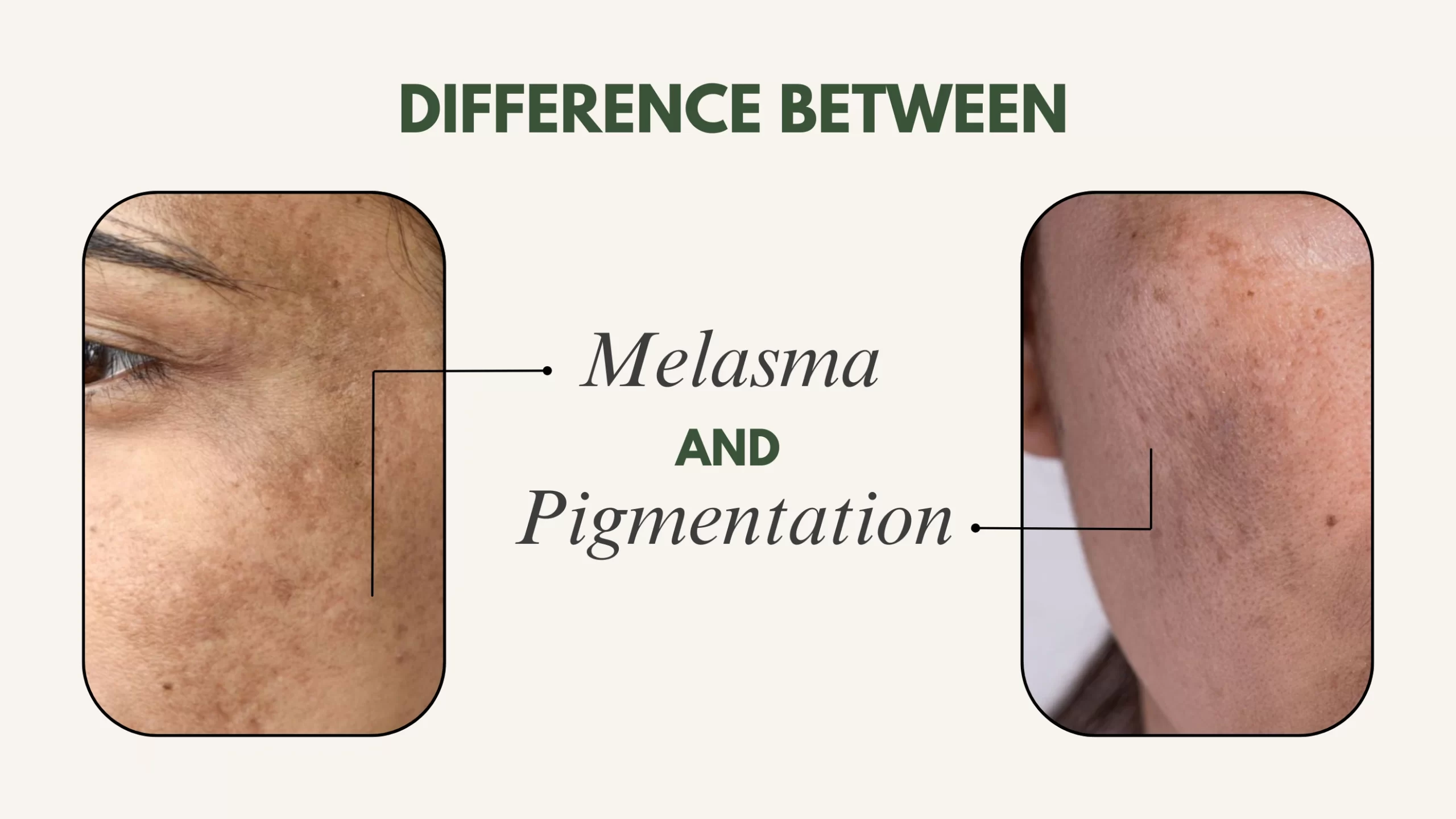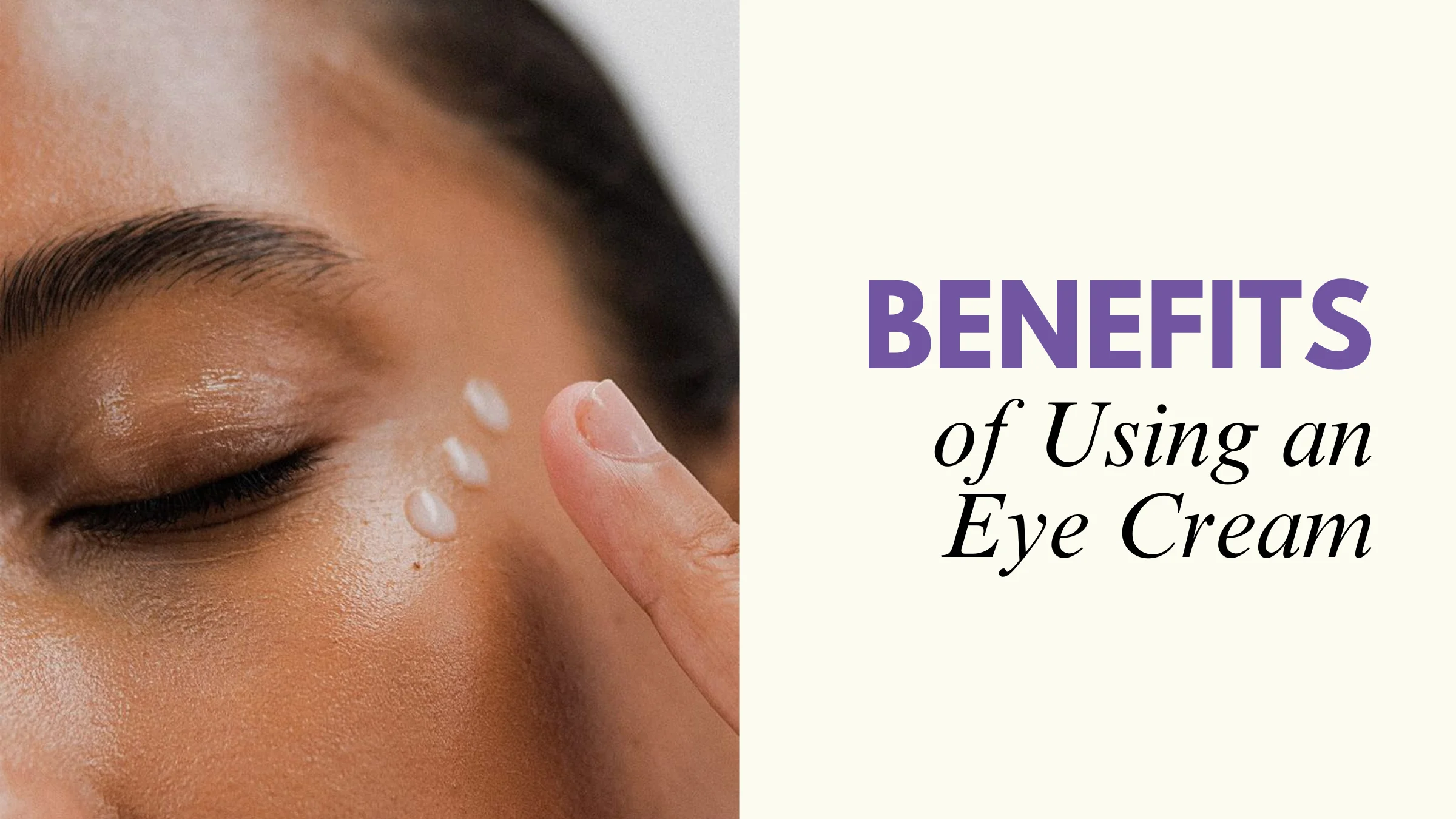Difference between Melasma and Pigmentation
When it comes to skin discoloration, the terms melasma and pigmentation are often used interchangeably. However, these two terms refer to different conditions that affect the skin. While they share some similarities, understanding their distinct characteristics, causes, and treatment options is important for effective management.
In this blog, we’ll break down the differences between melasma and general pigmentation, exploring the causes, symptoms, and treatments for both. Let’s dive in!
What is Pigmentation?
Pigmentation refers to the color of the skin, which is primarily determined by the production of melanin, a pigment that gives the skin its color. Pigmentation issues arise when there is either an overproduction or underproduction of melanin, leading to uneven skin tones. Pigmentation disorders are broad and can include a variety of conditions such as:
Hyperpigmentation: The skin becomes darker in certain areas due to an excess of melanin. This can occur as a result of sun exposure, acne scars, inflammation, or other factors.
- Hypopigmentation: This refers to lighter skin areas where there is insufficient melanin, often seen in conditions like vitiligo.
Common examples of pigmentation issues include sunspots (age spots), freckles, post-inflammatory hyperpigmentation (PIH), and melasma. While these conditions are all pigmentation-related, they each have distinct characteristics.
What is Melasma?
Melasma is a specific type of pigmentation disorder characterized by the appearance of dark, irregular patches on the skin, often on the face. These patches are typically brown or grayish-brown and most commonly appear on areas that are regularly exposed to the sun, such as the cheeks, forehead, nose, upper lip, and chin.
Melasma is often referred to as the “mask of pregnancy” because it frequently affects women during pregnancy due to hormonal changes. However, it can also occur in women who are taking birth control pills or undergoing hormone replacement therapy. While melasma can also affect men, it is much more common in women, especially those with darker skin tones.
Key Differences Between Melasma and General Pigmentation
Aspect | Melasma | General Pigmentation |
Cause | Primarily hormonal changes (e.g., pregnancy, birth control), sun exposure, and genetic factors. | Can be caused by sun exposure, acne scars, inflammation, aging, or genetics. |
Appearance | Dark, irregular patches, often symmetrical, on the face (especially the cheeks, forehead, nose, upper lip, and chin). | Can include dark spots, freckles, sunspots, or lighter patches depending on the type of pigmentation (e.g., post-inflammatory hyperpigmentation, sunspots). |
Risk Factors | Pregnancy, oral contraceptives, hormone therapy, and excessive sun exposure. | Sun exposure, acne scars, skin injuries, aging, and genetic predisposition. |
Age Group Affected | Primarily adults, especially women, during pregnancy or while on hormonal treatments. | Can affect people of all ages and skin types. |
Treatment Options | Topical treatments (e.g., hydroquinone, retinoids, Vitamin C), chemical peels, laser therapy, and sun protection. | Varies depending on the type (e.g., retinoids, AHAs, chemical peels, laser treatments, and sun protection). |
Duration | Melasma can be persistent and may worsen with sun exposure or hormonal changes. | Pigmentation can often fade with time or treatment, but sun exposure can worsen the condition. |
Causes of Melasma vs. General Pigmentation
Melasma: The primary cause of melasma is believed to be a combination of hormonal changes and sun exposure. Women are more likely to develop melasma during pregnancy (when hormonal levels fluctuate significantly), and it is also more common in women who are taking birth control pills or hormone replacement therapy. Genetics also plays a significant role in determining who may develop melasma.
General Pigmentation: General pigmentation issues, such as age spots or post-inflammatory hyperpigmentation, tend to result from sun damage, aging, or skin injuries (like acne scars). Inflammatory skin conditions, like acne, can trigger the skin to produce excess melanin as it heals, leading to hyperpigmentation.
Treatment Options: Melasma vs. Pigmentation
Both melasma and general pigmentation disorders can benefit from similar treatments, but the approach for each may differ slightly.
Treatment for Melasma:
Topical Treatments:
- Hydroquinone: Often considered the gold standard for treating melasma, hydroquinone is a bleaching agent that helps lighten dark spots.
- Retinoids (e.g., Tretinoin): Retinoids increase skin turnover, helping to fade melasma and prevent it from coming back.
- Vitamin C: Vitamin C is a powerful antioxidant that can brighten the skin and inhibit melanin production.
- Azelaic Acid: This helps reduce melanin production and can be a gentler alternative to hydroquinone.
Laser Treatments:
- Q-switched Nd:YAG Laser: This laser helps break up melanin in the skin and is often used to treat melasma.
- Fractional Lasers: These lasers target deeper layers of the skin to help with skin regeneration and improve pigmentation.
Chemical Peels:
- A dermatologist may recommend light chemical peels containing glycolic acid or salicylic acid to help fade melasma over time.
Sun Protection:
- Sunscreen with a high SPF (30 or higher) is crucial for melasma treatment because UV rays can worsen melasma and trigger flare-ups.
Treatment for General Pigmentation:
Topical Treatments:
- Similar to melasma treatments, general pigmentation can benefit from products containing hydroquinone, retinoids, Vitamin C, or niacinamide.
Chemical Peels and Exfoliation:
- Exfoliating treatments, such as AHAs or enzyme peels, can help fade dark spots and improve skin texture.
Microneedling:
- This procedure helps reduce pigmentation by promoting collagen production and increasing skin turnover.
Laser Treatments:
- Lasers such as fractional CO2 or Q-switched lasers can also help treat various types of hyperpigmentation.
Sun Protection:
- Just like with melasma, daily use of sunscreen is critical in preventing further pigmentation issues and protecting against UV damage.
Conclusion
While melasma is a specific type of pigmentation disorder that is often triggered by hormonal changes and exacerbated by sun exposure, pigmentation itself is a broader term that refers to various skin discolorations, including dark spots, freckles, and post-inflammatory hyperpigmentation. Understanding the root cause of pigmentation issues is key to choosing the right treatment, and whether you’re dealing with melasma or another form of pigmentation, effective solutions are available.
If you’re unsure about the type of pigmentation you’re dealing with, consulting with a dermatologist can help you determine the most appropriate treatment plan for your skin. The key to managing both melasma and other pigmentation issues is consistency, patience, and, of course, sun protection.
FAQ
1 What is the difference between melasma and pigmentation?
Melasma is a specific type of pigmentation, often caused by hormonal changes, while pigmentation refers to any type of skin discoloration, including spots, freckles, or uneven skin tone.
2 What causes melasma?
Melasma is primarily triggered by hormonal changes, often due to pregnancy, birth control pills, or hormone replacement therapy. Sun exposure can also worsen melasma.
3 Can pigmentation occur without hormonal changes?
Yes, pigmentation can be caused by factors like sun exposure, aging, acne scars, or injuries to the skin, and does not necessarily involve hormonal changes like melasma.
4 Is melasma more common in women?
Yes, melasma is more common in women, particularly during pregnancy (often called the “mask of pregnancy”) or when taking hormonal medications like birth control pills.
5 Are the treatments for melasma and pigmentation the same?
While treatments for both can overlap (such as using sunscreen, topical creams with hydroquinone or retinoids), melasma might require additional specific treatments like chemical peels or laser therapy.
6 Can melasma and pigmentation affect all skin tones?
Yes, both melasma and pigmentation can affect any skin tone, but they are more commonly seen in individuals with darker skin tones, as excess melanin production is more noticeable.



